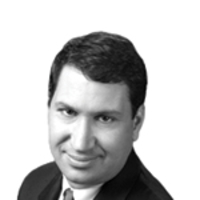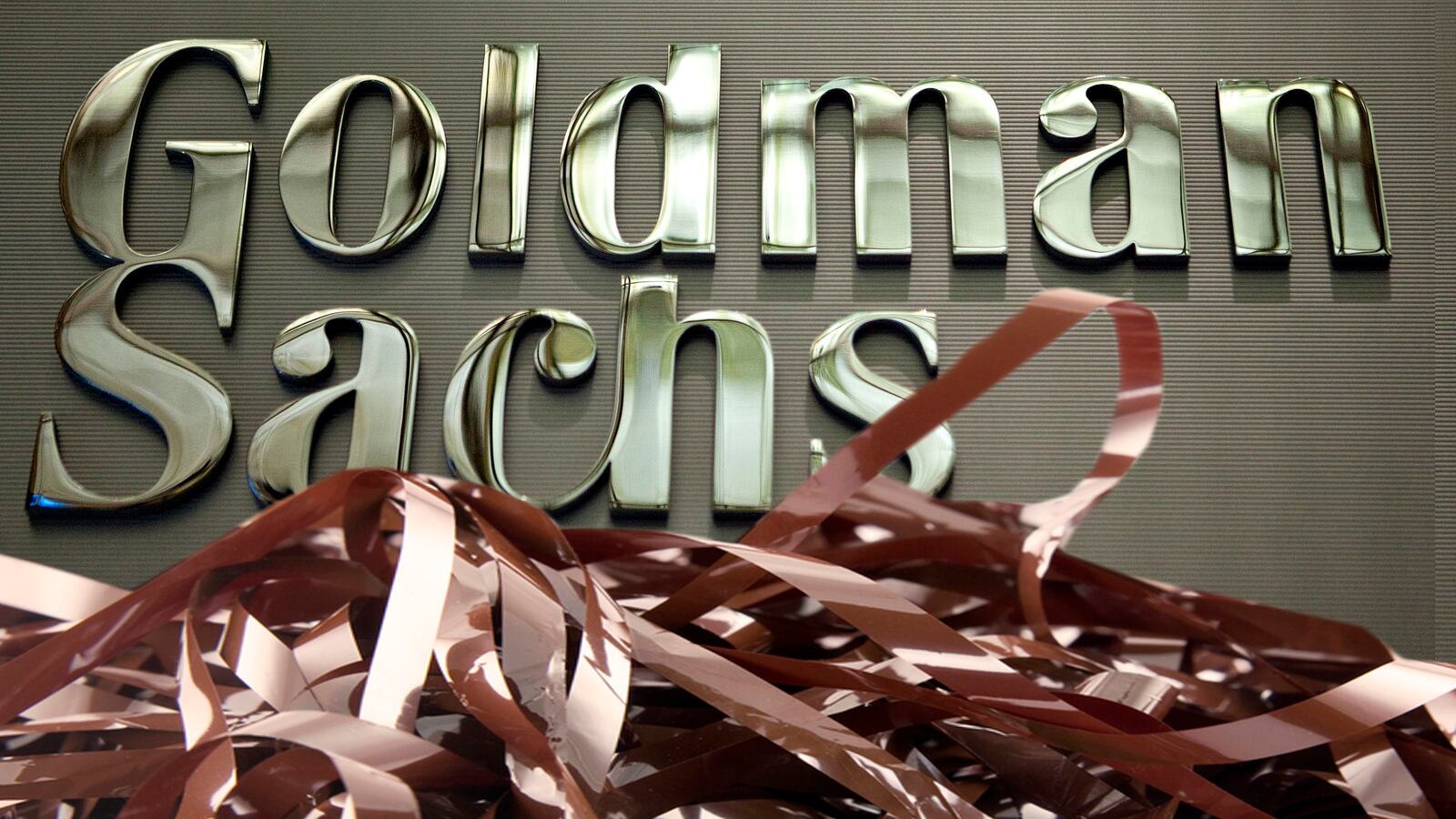On Friday, This American Life and Pro Publica unveiled a fantastic investigation. Carmen Segarra, a bank examiner at the Federal Reserve Bank of New York, had grown disenchanted with her employer’s supervision of the giant bank Goldman Sachs—and began to record conversations between her colleagues, and between her colleagues and Goldman executives.
The results were stunning. (Listen to it here and read about it here. And here is the Fed’s response.)
Segarra’s tapes take us inside the Federal Reserve Bank of New York, which is literally a fortress. Built in the early 1920s, modeled after Italian palazzos, with thick walls, to ward off terrorist attacks and protect the gold stored underneath them, it embodies the Federal Reserve’s larger image: secretive, impenetrable, hierarchical, tightly controlled.
But the inner sanctum is peopled by feckless bureaucrats. In Segarra’s tapes, many of those charged with supervising America’s largest banks are either uninterested, unwilling, or unable to stand up to the large institutions over which they are supposed to be riding herd.
Much of the report centers on the Fed’s relationship with Goldman Sachs, the giant investment bank that turned itself into a commercial bank in late 2008 so that it could take advantage of the cheap financing provided by the Federal Reserve. And we are treated to a parade of embarrassing episodes. When a Goldman executive said that “once clients were wealthy enough, certain consumer laws didn’t apply to them,” Segarra’s colleagues acted as if the line hadn’t been uttered. When Goldman was doing a deal with a Spanish bank to make its balance sheet look better and did so without getting the Fed’s approval, the Fed did nothing. On a call with Goldman—before which Fed officials had promised to get tough with the investment bank—the questioning was incredibly wimpy. When Segarra in 2012 concluded that Goldman’s conflict-of-interest policy was essentially nonexistent, her supervisors pushed back. She was fired soon after.
What comes through, time and again, is what Michael Lewis. calls the “breathtaking wussiness of the people at the Fed.”
It’s very troubling, of course. But it is not at all surprising. It shows that when it comes to banks’ regulatory capture of the entity that is supposed to be looking over their shoulder, not much has changed—not only since before the financial crisis, but from the time the Fed was created.
The New York Federal Reserve Bank has always been the most important regional unit of the Federal Reserve system—because it supervises the biggest banks, because it helps implement monetary policy by buying and selling bonds, and because it is the first line of defense against financial disasters. And its board of governors has always included Wall Street big shots.
In its earliest years, the New York Fed was literally a creature of Wall Street. In February 1929, when the New York Fed asked for permission to raise interest rates to choke off speculation, Charles Mitchell, the head of National City bank (the predecessor of Citibank) and New York Fed governor, objected, and got Treasury Secretary Andrew Mellon to put the kibosh on any increase. The speculation continued, the market crashed, and Mitchell was indicted in 1933 for tax evasion.
In 1998, when the hedge fund Long Term Capital Management blew up, the New York Fed helped organize a $3.65 billion bailout. In March 2008, the New York Fed, under the leadership of Timothy Geithner, helped manage the near-failure of Bear Stearns, and its hastened sale to J.P. Morgan Chase, even though Bear wasn’t a regulated bank. Five months later, the New York Fed tried (without success) to organize a bailout of Lehman Brothers. It then helped design and implement the bailout of insurer AIG, which, like Bear Stearns, was not regulated by the Fed.
The New York Federal Reserve isn’t there to look over the shoulders of big banks and tell them what to do. It never has been. It is there to help them do what they do, to pick them up when they fall, and to prevent the failure of companies in adjacent industries from hurting them.
In some ways, things have changed since the financial crisis. The Consumer Financial Protection Bureau is keeping watch over financial-services companies. The Volcker Rule, a component of the far-reaching Dodd-Frank law, required large banks to cut back on proprietary trading. And higher capital standards have been put in place.
But while they have been taken down a notch, giants like Goldman Sachs still tower over their regulators. The mismatch in resources, status, and money between the supervisor and the supervised remains vast. And the borders between the two are permeable. The president of the New York Fed, Bill Dudley, is a former Goldman chief economist. And the report notes that several of Segarra’s colleagues at the New York Fed now work for Goldman.
The “breathtaking wussiness”—the butt-kissing and deference, the reluctance to challenge brazen behavior, and the tendency to put down internal dissent—all this is a feature, not a bug. It is how the system works—and how it has almost always worked. Not even a once-in-a-century crisis—or even three once-in-a-century crises in a single century—can alter that.






